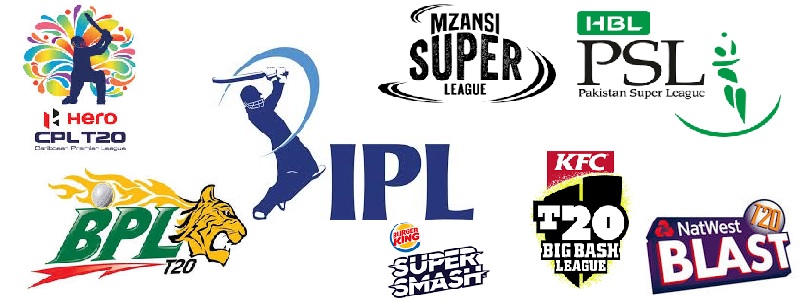Earlier this year, the Supreme Court of India made headlines when it called out the financial damage caused by cricket match-fixing. As reported by Deccan Herald, the court pointed directly to the Karnataka Premier League scandal, where several players and franchise officials were linked to spot-fixing.
The bench said, “We are keen to go deeper into the issue. It has very serious ramifications for the economy. Today, we don’t just want to observe anything that would look like we are pre-judging the issue. But this kind of betting has very serious financial ramifications on the economy.”
That’s because when cricket loses credibility, viewership drops, advertising money pulls back, and every connected industry will suffer terribly.
Spot-Fixing Has Always Been a Problem, and It’s Still Happening in 2025
The fast pace of the T20 cricket format gives players more opportunities to manipulate single events without raising obvious red flags. Fixers know this and target overs, balls, or fielding errors that blend into the natural flow of a match.
An example is the IPL 2013 scandal, which remains one of the biggest cases to date. Sreesanth, Ajit Chandila, and Ankeet Chavan were banned for their involvement. But it seems like people in the industry didn’t learn their lessons. Even smaller competitions continue to face similar accusations, and that includes the Tamil Nadu Premier League and the Sri Lanka Premier League.
This year, we’ve also seen how spot-fixing is being done creatively. Gurmeet Singh Bhamrah, a former co-owner of a Mumbai T20 League franchise, was banned for life by the Board of Control for Cricket in India (BCCI) Ombudsman in April. He allegedly approached players online during the 2019 season and offered them money and more benefits in exchange for deliberate underperformance.
There was also a 2022 case where the Central Bureau of Investigation booked three individuals for match-fixing using fake accounts and digital wallets tied to foreign operators. They targeted players in unofficial Indian T20 leagues and used online chat apps to coordinate plays in real time. That’s the direction things have taken. Less cash, more encrypted messages, and fixers who never show their face are starting to be the modern tactics.
What Leagues and Authorities Are Doing About It
The Board of Control for Cricket in India has ramped up its anti-corruption systems. The Anti-Corruption Unit (ACU) now holds mandatory briefings before each IPL season. They educate players about red flags and reporting channels. Players are also told to avoid unknown contacts, reject gifts, and immediately report suspicious behavior.
Phones and communication devices are heavily monitored during tournaments. At stadiums, special integrity officers observe player behavior off the field. The ICC also works with data monitoring firms that track betting patterns in real time. If anything looks suspicious, like an unusual betting spike during a certain over, it’s flagged instantly.
However, these measures are more visible in elite leagues like the IPL, and less so in newer leagues across India. Some don’t even have a formal ACU structure. That’s where it becomes easy for spot-fixing to slip through.
On the gambling side, the best betting sites that operate legally in other jurisdictions often cooperate with anti-fraud teams. But India’s legal take on this just complicates things. Since betting is mostly illegal domestically, the BCCI doesn’t work directly with any platforms. This limits how much intel they can access in real time.
Are These Efforts Working?
There have been arrests, bans, and investigations, but spot-fixing hasn’t disappeared (as evident with the recent spot-fixing issue in April). Most of the successful interventions rely on whistleblowers. If a player doesn’t report the approach or if the platform doesn’t flag suspicious behavior, there’s very little the ACU can do.
Smaller leagues, especially, have poor track records. Many don’t even collect player data systematically. That makes tracing payments or confirming match anomalies harder. And even in IPL, high-profile bans are rare.
Why T20 Will Always Be at Risk
T20 cricket is built around isolated, high-impact moments. One missed catch or a mistimed over can change a match. There’s also the money gap. Top players earn crores per season. But others in the same squad might play one or two matches and earn a fraction. That gap makes some players vulnerable, especially when approached with large sums just to bowl a no-ball.
Add to that the rise of low-tier leagues with no transparency. You now have leagues with livestreams, full betting markets, and no formal body overseeing player integrity. It’s the perfect recipe for repeated offenses.
Summary
Education helps. Surveillance helps. But until there’s consistent regulation across all leagues, not just the IPL, spot-fixing will just keep finding a way back in. The Supreme Court is right: this is no longer an issue about sportsmanship. It’s also about public trust, financial integrity, and the future of cricket in India.
Fixing isn’t always about big conspiracies. Sometimes, it’s just one over, one player, and one moment. That’s why cracking down on it needs to happen everywhere, and not just when it hits headlines.





Be First to Comment